Welcome to the fascinating world of Tarot! If you’ve ever found yourself grappling with a difficult decision, unsure of which path to take or what choices to make, then a Decision-Making Spread could be just what you need. This step-by-step guide will walk you through the process of performing a Decision-Making Spread, allowing you to gain valuable insights and clarity on the options before you. By harnessing the power of Tarot cards, you’ll be able to explore different perspectives, uncover hidden factors, and receive guidance to help you make informed choices. So, grab your Tarot deck and let’s dive into the transformative journey of decision-making together!
Contents
- What is a Decision-Making Spread?
- Benefits of a Decision-Making Spread
- Step 1: Prepare Your Tarot Deck
- Step 2: Set Your Intention
- Step 3: Shuffle the Cards
- Step 4: Lay Out the Spread
- Step 5: Interpret the Cards
- Step 6: Reflect on the Reading
- Tips for Performing a Decision-Making Spread
- Conclusion
-
Frequently Asked Questions
- 1. Can anyone perform a Decision-Making Spread with Tarot cards?
- 2. How many cards are typically used in a Decision-Making Spread?
- 3. Can I use any Tarot deck for a Decision-Making Spread?
- 4. How long does it take to perform a Decision-Making Spread?
- 5. Can a Decision-Making Spread predict the future?
- 6. Should I follow the advice given by the Tarot cards in a Decision-Making Spread?
- 7. Can a Decision-Making Spread help with major life decisions?
- 8. How often should I perform a Decision-Making Spread?
- 9. Can I modify the positions in a Decision-Making Spread?
- 10. How can the reflections on a Decision-Making Spread help me?
- References
What is a Decision-Making Spread?
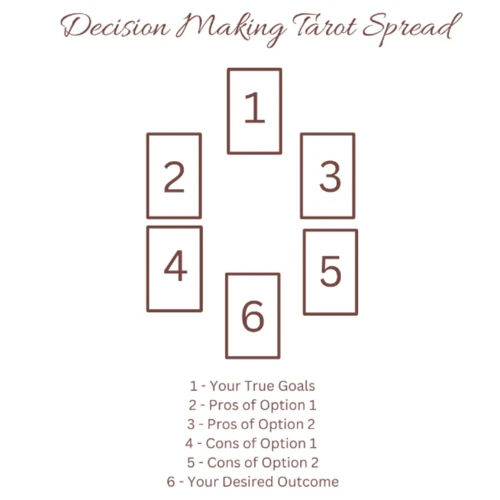
A Decision-Making Spread is a specific layout of Tarot cards that is designed to aid in the process of making decisions. It allows individuals to delve into their subconscious mind and tap into their intuition to gain insights and guidance. This type of spread typically consists of multiple positions, each representing a different aspect or factor to consider in the decision-making process. The cards drawn in each position provide information and possible outcomes related to the decision at hand. The layout of the spread creates a visual representation of the different factors and options, making it easier to analyze and interpret the insights provided by the Tarot cards. A Decision-Making Spread acts as a powerful tool for self-reflection and self-discovery, providing clarity and assisting individuals in making informed choices that align with their highest good. If you want to explore different variations of decision-making spreads, you can check out our article on Exploring Decision-Making Spread Variations. Or, if you’re interested in using intuition specifically for decision-making, you can try the Intuition Decision-Making Spread to gain even more clarity.
Benefits of a Decision-Making Spread
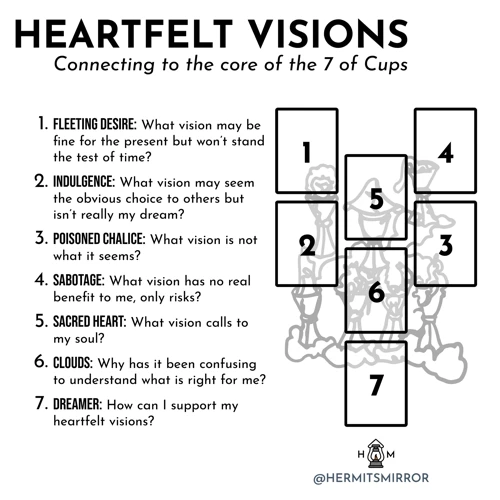
One of the most significant benefits of a Decision-Making Spread is the ability to gain clarity and insight into complex situations. By using Tarot cards as a divination tool, individuals can tap into their intuition and receive guidance on the options and factors they should consider. The symbols and meanings depicted in the cards serve as a powerful source of introspection, allowing individuals to explore different perspectives and uncover hidden aspects of their decision-making process. The visual layout of the Decision-Making Spread provides a structured framework for organizing thoughts and examining the various outcomes and possibilities. This structured approach helps individuals make sense of their choices and navigate through uncertainty. A Decision-Making Spread offers a unique opportunity for self-reflection and self-discovery, enabling individuals to align their decisions with their authentic desires and values. If you’re ready to experience the benefits of a Decision-Making Spread firsthand, check out our comprehensive guide on How to Gain Clarity with a Decision-Making Spread.
Step 1: Prepare Your Tarot Deck

Step 1: Prepare Your Tarot Deck
Preparing your Tarot deck is an essential step before performing a Decision-Making Spread. Follow these simple yet important steps to ensure your deck is ready for the reading:
1. Create a tranquil space: Find a peaceful area where you can focus and connect with the Tarot cards. Clear any clutter and create a serene environment.
2. Clear your energy: Take a moment to ground yourself and release any negative or stagnant energy. You can do this by taking a few deep breaths, visualizing white light surrounding you, or even smudging the deck with sage or palo santo.
3. Connect with your deck: Hold the Tarot deck in your hands and establish a connection. You can do this by simply focusing your attention on the cards, expressing gratitude, or even speaking affirmations.
4. Shuffle the cards: Shuffle the deck thoroughly to mix up the energy and ensure a random selection of cards for your spread. You can shuffle in different ways, such as overhand shuffling or riffle shuffling. Find a method that resonates with you.
Remember, each Tarot deck is unique, so take the time to familiarize yourself with the cards, their imagery, and their meanings. By preparing your Tarot deck with intention and care, you are setting the foundation for a meaningful and insightful Decision-Making Spread.
Step 2: Set Your Intention
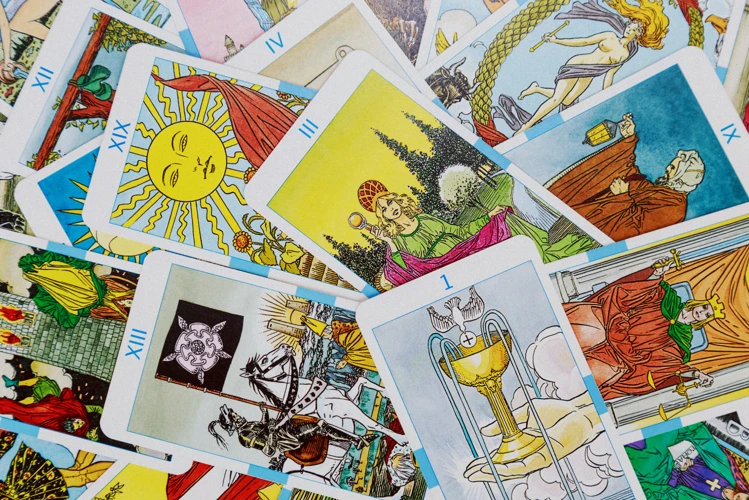
Setting your intention is a crucial step in performing a Decision-Making Spread with Tarot cards. It involves clarifying your purpose and what you hope to gain from the reading. Before you begin, take a moment to reflect on the decision you’re facing and the specific aspect of the situation that you would like guidance on. Clearly define what you want to achieve or understand through the spread. It could be gaining clarity, receiving guidance, or exploring the potential outcomes of your choices. By setting your intention, you are directing your energy and focus towards the purpose of the reading, which allows the Tarot cards to provide more meaningful and relevant insights. You can write down your intention on a piece of paper, or simply state it out loud. By doing so, you signal to the universe and your subconscious mind that you are ready to receive guidance and clarity. Remember, your intention will guide the energy and interpretation of the cards, so be sure to set it with confidence and conviction.
Step 3: Shuffle the Cards
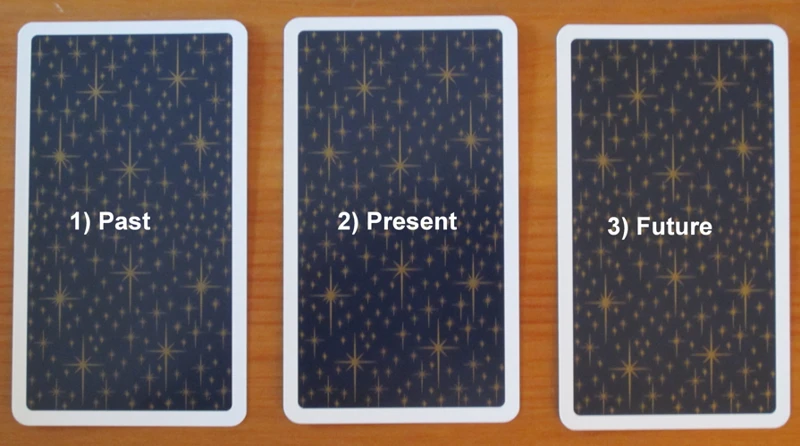
Step 3: Shuffle the Cards
Once you have prepared your Tarot deck and set your intention, it’s time to shuffle the cards. This step is essential as it allows the energy of your question or decision to infuse the deck. As you shuffle, focus on your inquiry and the guidance you seek. There are various ways to shuffle the cards, so choose the method that resonates with you. You can opt for the classic overhand shuffle, where you hold the deck in one hand and use the other hand to pull small groups of cards from the top and let them fall back on the deck. Another option is the riffle shuffle, where you split the deck into two halves and then release the cards so that they interweave with each other. Whichever technique you choose, ensure that you shuffle thoroughly to mix the cards well. This randomization ensures that the cards drawn will accurately reflect the energy and guidance needed for your decision-making process. After performing the shuffle, take a moment to pause and connect with the deck’s energy. This moment of stillness prepares you for the next step, which is laying out the spread and drawing the cards to uncover insights.
Step 4: Lay Out the Spread
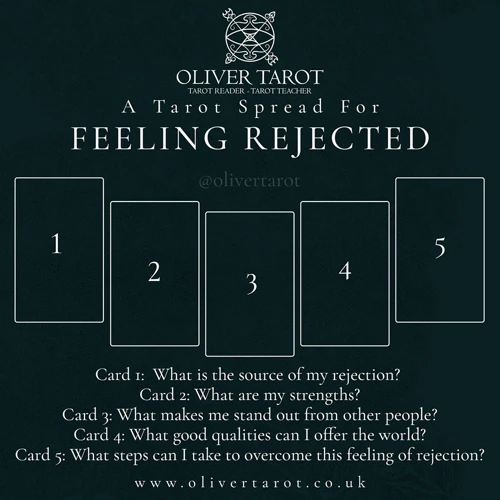
To begin the decision-making spread, it’s time to lay out the cards. You can use a traditional Celtic Cross layout or create a custom layout that suits your needs. As you lay out the cards, it’s essential to have a clear mind and focus on your intention. You can use a table or a list format to represent the different positions within the spread. Position 1, labeled as “The Present Situation,” represents the current circumstances surrounding your decision. Position 2, known as “The Factors to Consider,” highlights the various influences and factors that play a role in your decision-making process. Position 3, labeled as “The Possible Outcomes,” provides insights into the potential consequences or outcomes of each choice you’re considering. Finally, position 4, called “The Advice or Guidance,” offers guidance and recommendations based on the cards drawn. With the layout complete, you’re ready to move on to the next step: interpreting the cards.
4.1: Position 1 – The Present Situation
Position 1 in the Decision-Making Spread is dedicated to understanding the present situation. This position reveals the current circumstances surrounding the decision you are facing. It provides insight into the factors, emotions, and external influences that are impacting your decision-making process. When interpreting the card in this position, pay attention to its symbolism, imagery, and associated meanings. Consider the energy and message it conveys in relation to your question or concern. The card drawn in Position 1 may shed light on any challenges, opportunities, or underlying dynamics that are present in your current situation. It serves as a foundation for the rest of the spread, setting the stage for exploring the different aspects of your decision. Take your time to reflect on the card and how it relates to your life and the choices you are contemplating. By gaining a deeper understanding of your present situation, you can make more informed decisions that align with your desires and values.
4.2: Position 2 – The Factors to Consider
In the Decision-Making Spread, Position 2 – The Factors to Consider, plays a crucial role in providing a comprehensive understanding of the decision at hand. This position allows you to identify and explore the different factors and variables that are influencing your decision-making process. The cards drawn in this position shed light on the various elements that need to be taken into account, helping you assess the pros and cons, potential challenges, and opportunities associated with each option. Each card represents a specific factor that holds significance in your decision-making process. It could be factors such as your emotions, financial considerations, relationships, personal values, or external influences. The interpretations of the cards in this position provide valuable insights into how each factor impacts your decision and the potential outcomes associated with them. By acknowledging and understanding the factors to consider, you gain a deeper understanding of the complexities involved in your decision, enabling you to make a more informed choice. Remember, every decision is unique, and the factors to consider will vary for each individual and situation. Trust your intuition and use the guidance from the Tarot cards to navigate through this position effectively.
4.3: Position 3 – The Possible Outcomes
In the Decision-Making Spread, Position 3 focuses on the possible outcomes that could arise from the decision being considered. This position provides insight into the potential consequences or results that may manifest depending on the choices made. When interpreting the Tarot card drawn in Position 3, it’s important to pay attention to the symbolism, imagery, and keywords associated with the card. The card may depict different scenarios or indicate the various paths that could unfold based on the decision at hand. It provides an opportunity to explore the potential positive outcomes, challenges, or unexpected developments that may arise. The card drawn in this position can serve as a guide, helping you understand the potential consequences of your choices and allowing you to make a more informed decision. By considering the possible outcomes, you can weigh the pros and cons, evaluate the risks and rewards, and gain a clearer understanding of how each decision may impact your life. This insight is invaluable in empowering you to make choices that align with your values, desires, and overall well-being.
4.4: Position 4 – The Advice or Guidance
Position 4 in the Decision-Making Spread is dedicated to providing advice or guidance regarding the decision at hand. This position offers insights and suggestions that can help navigate through the options and make a well-informed choice. The card drawn in this position holds the key to understanding what actions or steps should be taken next. It acts as a beacon, providing clear direction and wise counsel. The advice or guidance card may provide tangible steps to follow, offer a new perspective, or highlight important considerations that may have been overlooked. It serves as a source of inspiration and encouragement, guiding individuals towards the best possible outcome. Whether it’s a card that emphasizes the importance of patience and contemplation or one that encourages taking a bold and decisive leap, the advice or guidance in Position 4 acts as a compass, helping to steer the decision-maker in the right direction. It’s important to reflect on the message of this card and incorporate it into the decision-making process to make the most beneficial choice possible.
Step 5: Interpret the Cards
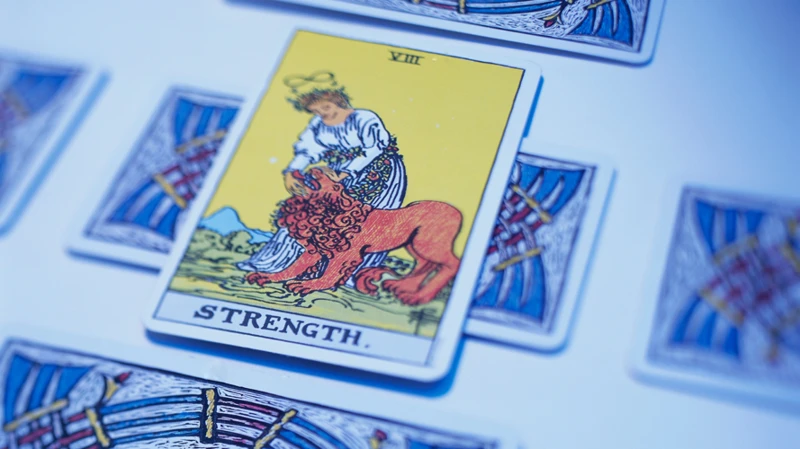
Step 5: Interpret the Cards
Now that you have laid out the cards in the Decision-Making Spread, it’s time to interpret their meanings. Each card represents a different aspect of your decision, and by understanding their symbolism and messages, you can gain valuable insights. Start by focusing on each card individually and pay attention to its imagery, symbolism, and traditional meanings. Consider how the card relates to the position it occupies in the spread and the question or decision at hand.
Take note of any strong impressions, emotions, or intuitive flashes that arise as you observe and reflect on each card. Trust your intuition and allow it to guide you in deciphering the messages that the cards are conveying. Additionally, consult any guidebooks or resources that provide interpretations for each card if you need additional insight or clarification.
As you interpret the cards, try to look beyond the surface-level meanings and consider the deeper symbolism and connections that may be present. Pay attention to any patterns or recurring themes that emerge, as these can provide valuable insights into the decision you are facing.
It’s important to remember that interpretation is subjective and personal. What a card means to one person may differ from what it means to another. Trust your instinct and intuition as you make connections and draw conclusions from the cards.
If you find that you are struggling to interpret a particular card or aspect of the spread, don’t hesitate to seek guidance or advice from a more experienced Tarot reader or consult additional resources. Sometimes an outside perspective can shed new light on the meaning and help you gain a fresh perspective.
Once you have interpreted each card, take a step back and look at the spread as a whole. Consider how the cards interact with one another and the overall message or guidance that emerges. This holistic view can provide valuable insights and a comprehensive understanding of the decision you are facing.
Remember, the interpretation of the cards is a deeply personal and introspective process. Trust in your own wisdom and intuition as you navigate the meanings of the cards and apply them to your decision-making journey.
Step 6: Reflect on the Reading
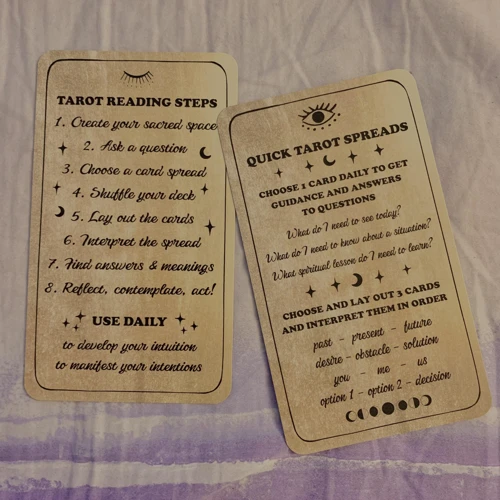
Step 6: Reflect on the Reading
After interpreting the cards and gaining insights from the Decision-Making Spread, it’s important to take the time to reflect on the reading. This step allows you to deepen your understanding of the information provided and apply it to your specific situation. Consider the following actions to make the most out of your reflection:
1. Journaling: Write down your thoughts, feelings, and impressions that arose during the reading. Reflect on any patterns or recurring symbols you noticed in the cards. This process of writing can help you gain further clarity and give you a record to refer back to in the future.
2. Emotional Awareness: Pay attention to your emotions as you reflect on the reading. Are there any cards or interpretations that evoke strong feelings within you? Take note of these reactions and explore why they may be present. Emotions can provide valuable insights into your subconscious desires and fears.
3. Contemplation: Find a quiet space where you can sit and contemplate the reading. Close your eyes and visualize the cards or specific images that stood out to you. Allow your mind to wander and explore the connections between the cards and your decision-making process. Trust your intuition and let any new thoughts or ideas come to the surface.
4. Integration: Consider how the information from the reading fits into the bigger picture of your life. How does it align with your values, goals, and aspirations? Reflect on how the guidance provided by the Tarot cards can be integrated into your decision-making process. Let the insights gained from the reading inform and guide your actions moving forward.
Remember, reflection is an ongoing process. Revisit your reading periodically to reassess and evaluate your decision-making journey. By taking the time to reflect, you can harness the wisdom of the Tarot and make more empowered choices in your life.
Tips for Performing a Decision-Making Spread
Here are some valuable tips to keep in mind when performing a Decision-Making Spread:
1. Set the right atmosphere: Before you begin, create a peaceful and conducive environment. Find a quiet space where you can relax and focus your energy. You may choose to light candles, burn incense, or play gentle music to enhance the atmosphere.
2. Trust your intuition: As you lay out the spread and interpret the cards, trust your instinctive understanding and connection with the Tarot. Remember that you are the ultimate interpreter of the cards, and your intuition plays a crucial role in deciphering their messages.
3. Ask clear and specific questions: To receive relevant and meaningful guidance, frame your questions in a clear and specific manner. This helps to focus the energy and intention of your reading.
4. Take notes: Keep a journal or notepad handy to jot down your thoughts, impressions, and any additional insights that may arise during the reading. This can be helpful for future reference and reflection.
5. Give yourself time: Performing a Decision-Making Spread requires patience and contemplation. Take your time to absorb the information that the cards reveal and reflect on their meanings. Avoid rushing through the process as it may hinder your ability to fully grasp the guidance being offered.
6. Trust the process: Remember that the Tarot is a powerful tool that can offer profound insights. Trust in the process and be open to receiving the wisdom and guidance that the cards provide.
By following these tips, you can enhance your experience with the Decision-Making Spread and gain valuable insights to inform your decision-making process.
Conclusion
In conclusion, the Decision-Making Spread is a valuable tool for gaining insights and clarity when faced with difficult choices. By using Tarot cards, individuals can tap into their intuition and subconscious to uncover hidden factors and possible outcomes related to their decisions. The step-by-step process outlined in this guide provides a structured approach to performing the spread, from preparing the Tarot deck to interpreting the cards and reflecting on the reading. The Decision-Making Spread empowers individuals to make informed choices that align with their highest good. It is important to remember that the Tarot cards are not necessarily a definitive answer or prediction, but rather a source of guidance and perspective. Trusting your intuition and engaging in self-reflection will enhance the effectiveness of the spread. By practicing and honing your skills with decision-making spreads, you will become more adept at navigating life’s choices and finding clarity in times of uncertainty. Embrace the power of the Tarot and embark on a transformative journey of decision-making today.
Frequently Asked Questions
1. Can anyone perform a Decision-Making Spread with Tarot cards?
Yes, anyone can perform a Decision-Making Spread with Tarot cards. It doesn’t require any special skills or prior experience. The Tarot cards are a tool that anyone can use to gain insights and guidance for decision-making.
2. How many cards are typically used in a Decision-Making Spread?
The number of cards used in a Decision-Making Spread can vary, but commonly it ranges from 3 to 7 cards. The number of cards is determined by the positions in the spread and the complexity of the decision being made.
3. Can I use any Tarot deck for a Decision-Making Spread?
Yes, you can use any Tarot deck for a Decision-Making Spread. Whether it’s a classic Rider-Waite deck or a more unique and artistic deck, the choice is completely up to you.
4. How long does it take to perform a Decision-Making Spread?
The time it takes to perform a Decision-Making Spread can vary depending on the complexity of the decision and your level of familiarity with Tarot. On average, it can take anywhere from 10 to 30 minutes.
5. Can a Decision-Making Spread predict the future?
A Decision-Making Spread is not meant to predict the future with certainty. Instead, it helps you gain insights and guidance based on the present circumstances and possible outcomes. It provides you with different perspectives to make more informed choices.
6. Should I follow the advice given by the Tarot cards in a Decision-Making Spread?
The advice given by the Tarot cards in a Decision-Making Spread should be taken as guidance rather than strict rules. Ultimately, the decision is yours to make. The cards offer insights and perspectives to consider, but it’s important to trust your own intuition and judgment.
7. Can a Decision-Making Spread help with major life decisions?
Absolutely! A Decision-Making Spread can be valuable for major life decisions. It can bring clarity to complex choices and provide guidance in aligning your actions with your values and aspirations.
8. How often should I perform a Decision-Making Spread?
The frequency of performing a Decision-Making Spread is entirely up to you. You can do it whenever you face a significant decision or whenever you feel the need for guidance and clarity.
9. Can I modify the positions in a Decision-Making Spread?
Yes, you can modify the positions in a Decision-Making Spread to suit your specific needs. Feel free to create custom positions or explore different spreads designed specifically for decision-making.
10. How can the reflections on a Decision-Making Spread help me?
Reflecting on a Decision-Making Spread allows you to integrate the insights gained from the Tarot cards into your decision-making process. It helps you understand the patterns, emotions, and values that influence your choices, leading to more self-awareness and empowered decision-making.






